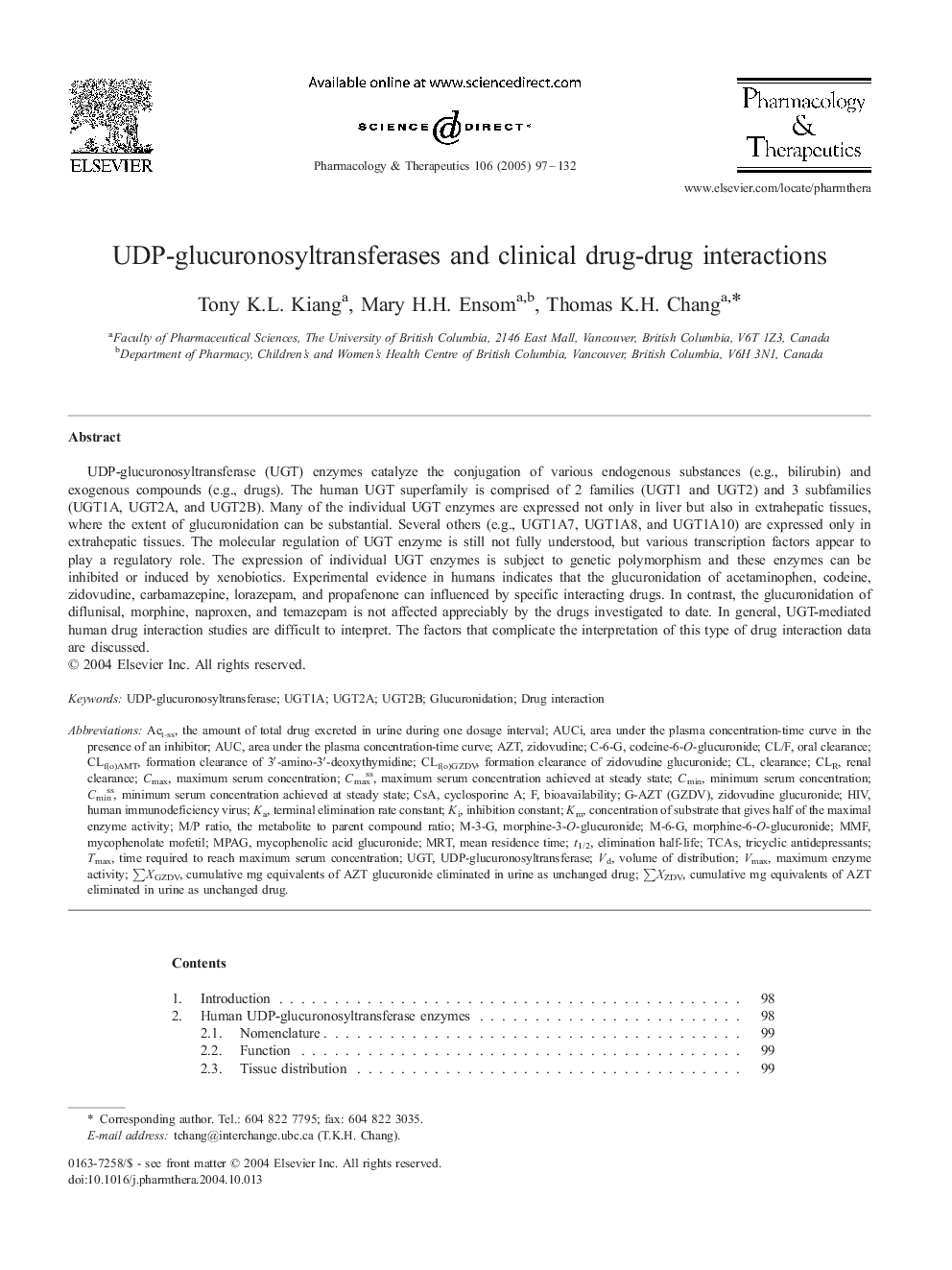| کد مقاله | کد نشریه | سال انتشار | مقاله انگلیسی | نسخه تمام متن |
|---|---|---|---|---|
| 9016145 | 1127662 | 2005 | 36 صفحه PDF | دانلود رایگان |
عنوان انگلیسی مقاله ISI
UDP-glucuronosyltransferases and clinical drug-drug interactions
دانلود مقاله + سفارش ترجمه
دانلود مقاله ISI انگلیسی
رایگان برای ایرانیان
کلمات کلیدی
Cminterminal elimination rate constantMPAGUGT1AUGT2BAUCiAZTCLRtmaxTCAsMMFVmaxMRTCmaxUGTAUC - AUCCL/F - CL / Ft1/2 - t1 / 2UDP-glucuronosyltransferase - UDP-گلوکورونوسیل ترانسفرازCSA - ایالات مؤتلفهٔ آمریکاclearance - ترخیص کالا از گمرکOral clearance - ترخیص کالا از گمرکDrug interaction - تعاملات داروییVolume of distribution - حجم توزیعmaximum serum concentration - حداکثر غلظت سرمیtricyclic antidepressants - داروهای ضد افسردگی سه حلقه ایZidovudine - زیدوودینCyclosporine A - سیکلوسپورینABioavailability - فراهم زیستیmycophenolate mofetil - مایکوفنولات موفتیلarea under the plasma concentration-time curve - محدوده تحت منحنی زمان غلظت پلاسماinhibition constant - مهار ثابتMean residence time - میانگین زمان اقامتelimination half-life - نیمه عمر حذفhuman immunodeficiency virus - ویروس نقص ایمنی انسانیHIV - ویروس نقص ایمنی انسانی renal clearance - کلیهGlucuronidation - گلوکورونید شدنmycophenolic acid glucuronide - گلیکورونید اسید مایکوفنولی
موضوعات مرتبط
علوم پزشکی و سلامت
داروسازی، سم شناسی و علوم دارویی
داروشناسی
پیش نمایش صفحه اول مقاله

چکیده انگلیسی
UDP-glucuronosyltransferase (UGT) enzymes catalyze the conjugation of various endogenous substances (e.g., bilirubin) and exogenous compounds (e.g., drugs). The human UGT superfamily is comprised of 2 families (UGT1 and UGT2) and 3 subfamilies (UGT1A, UGT2A, and UGT2B). Many of the individual UGT enzymes are expressed not only in liver but also in extrahepatic tissues, where the extent of glucuronidation can be substantial. Several others (e.g., UGT1A7, UGT1A8, and UGT1A10) are expressed only in extrahepatic tissues. The molecular regulation of UGT enzyme is still not fully understood, but various transcription factors appear to play a regulatory role. The expression of individual UGT enzymes is subject to genetic polymorphism and these enzymes can be inhibited or induced by xenobiotics. Experimental evidence in humans indicates that the glucuronidation of acetaminophen, codeine, zidovudine, carbamazepine, lorazepam, and propafenone can influenced by specific interacting drugs. In contrast, the glucuronidation of diflunisal, morphine, naproxen, and temazepam is not affected appreciably by the drugs investigated to date. In general, UGT-mediated human drug interaction studies are difficult to interpret. The factors that complicate the interpretation of this type of drug interaction data are discussed.
ناشر
Database: Elsevier - ScienceDirect (ساینس دایرکت)
Journal: Pharmacology & Therapeutics - Volume 106, Issue 1, April 2005, Pages 97-132
Journal: Pharmacology & Therapeutics - Volume 106, Issue 1, April 2005, Pages 97-132
نویسندگان
Tony K.L. Kiang, Mary H.H. Ensom, Thomas K.H. Chang,